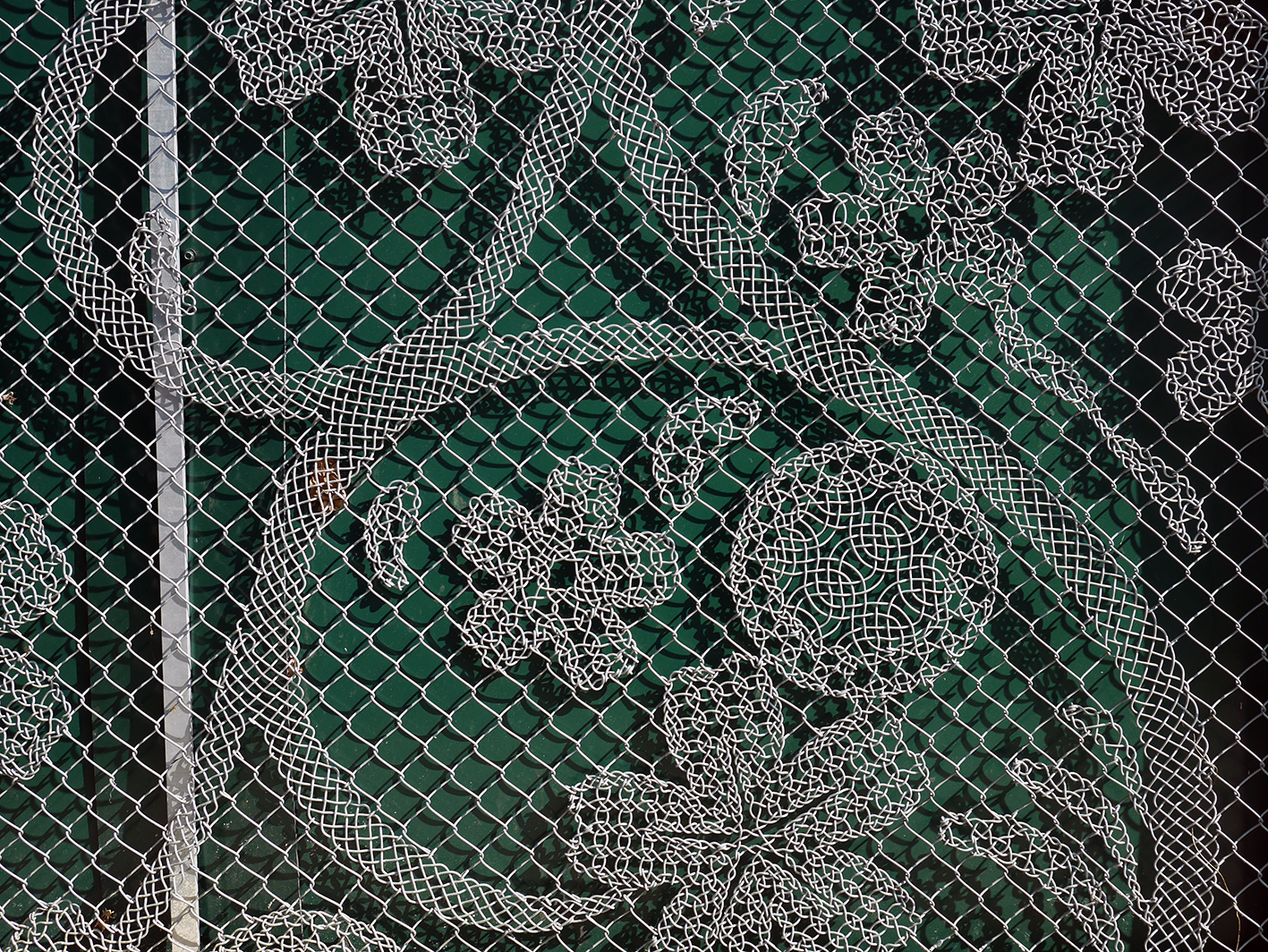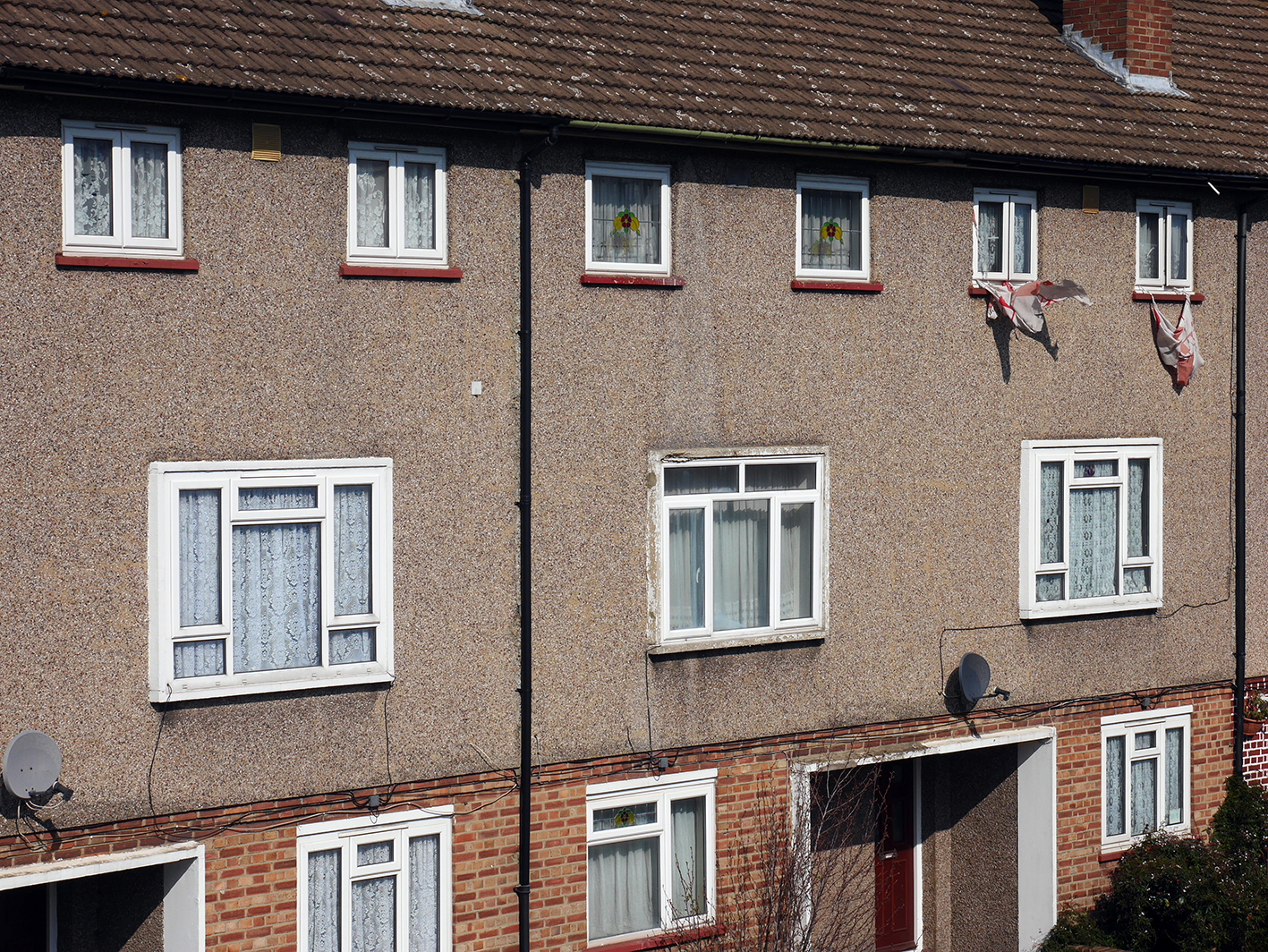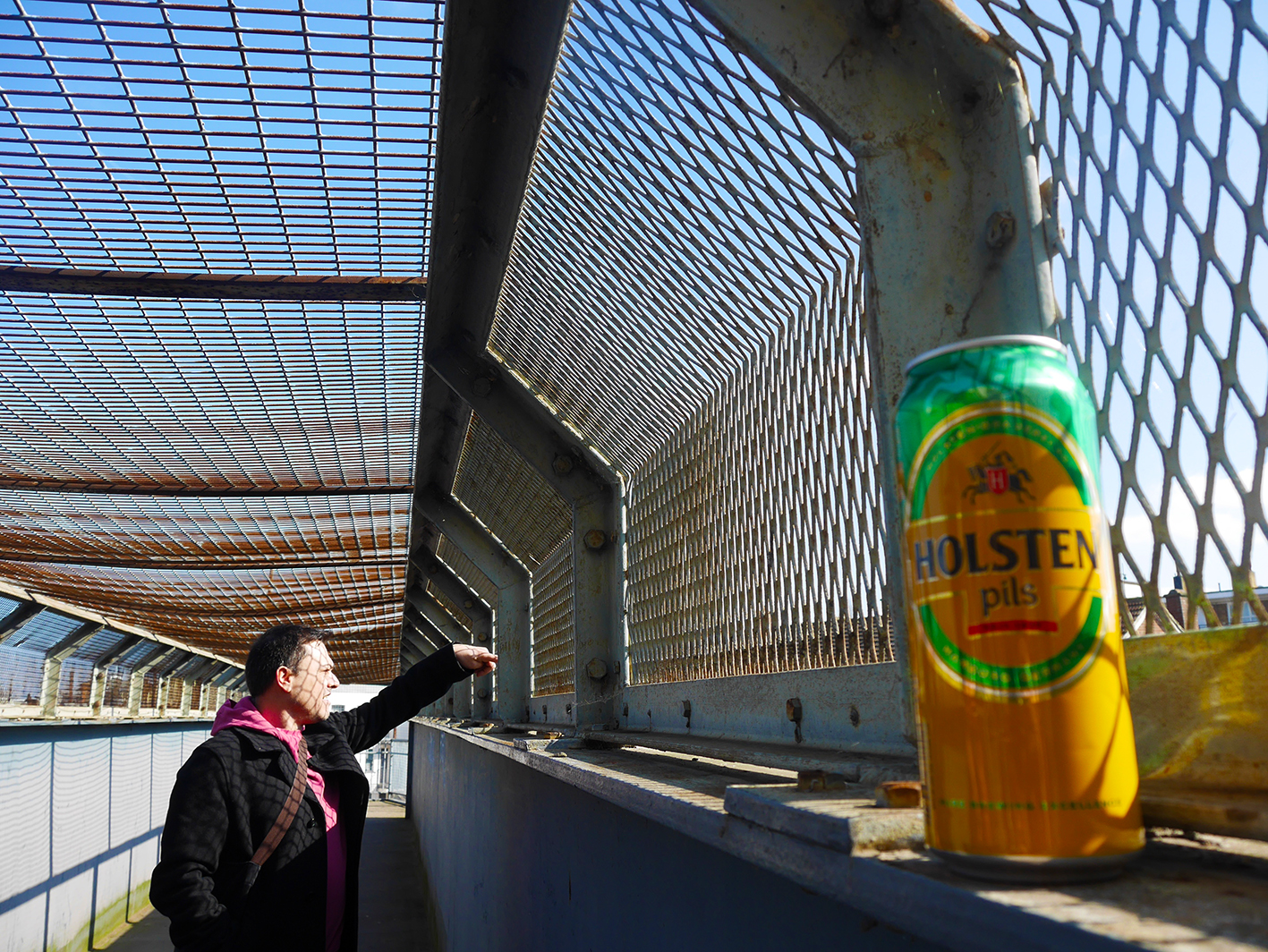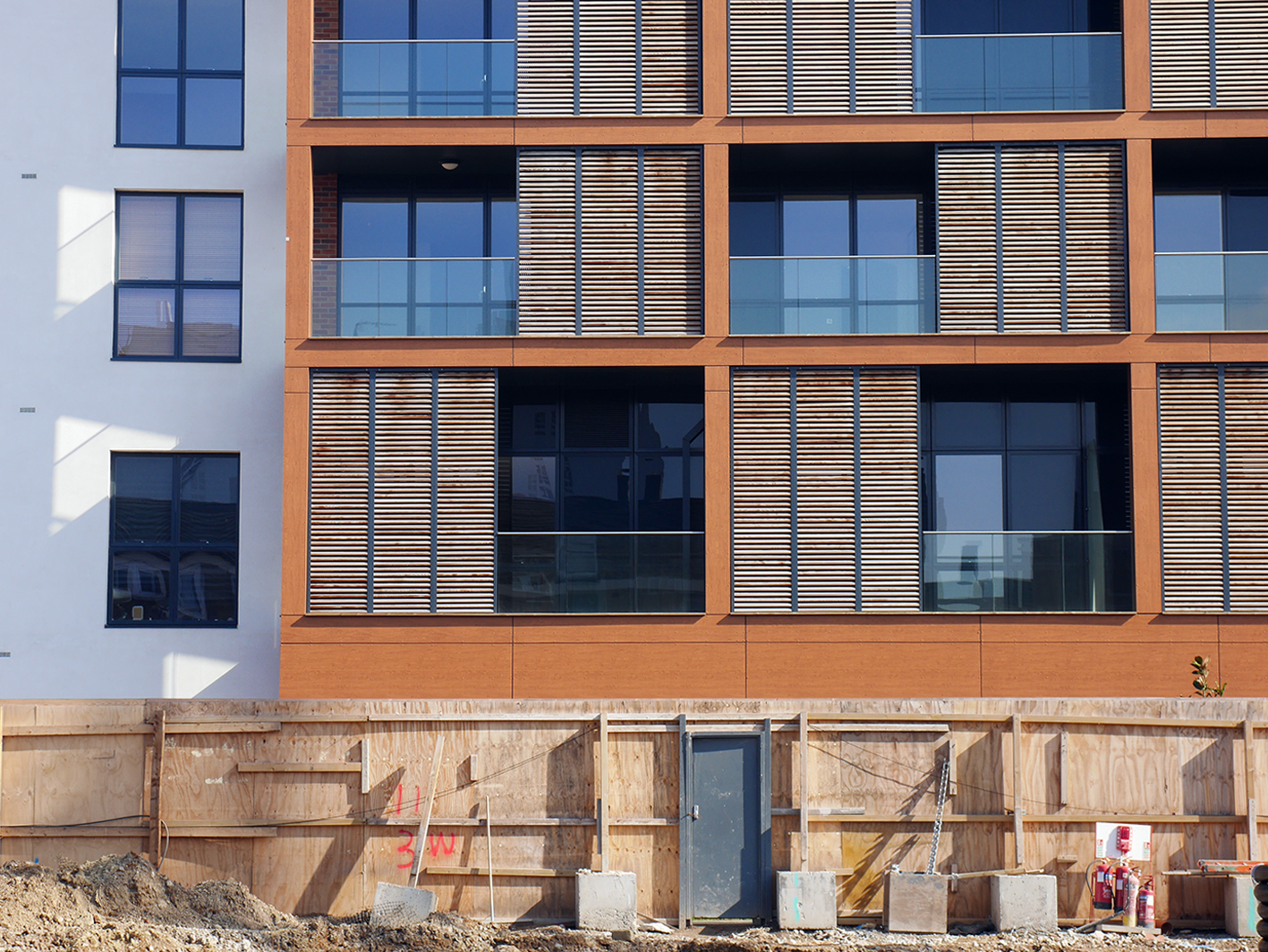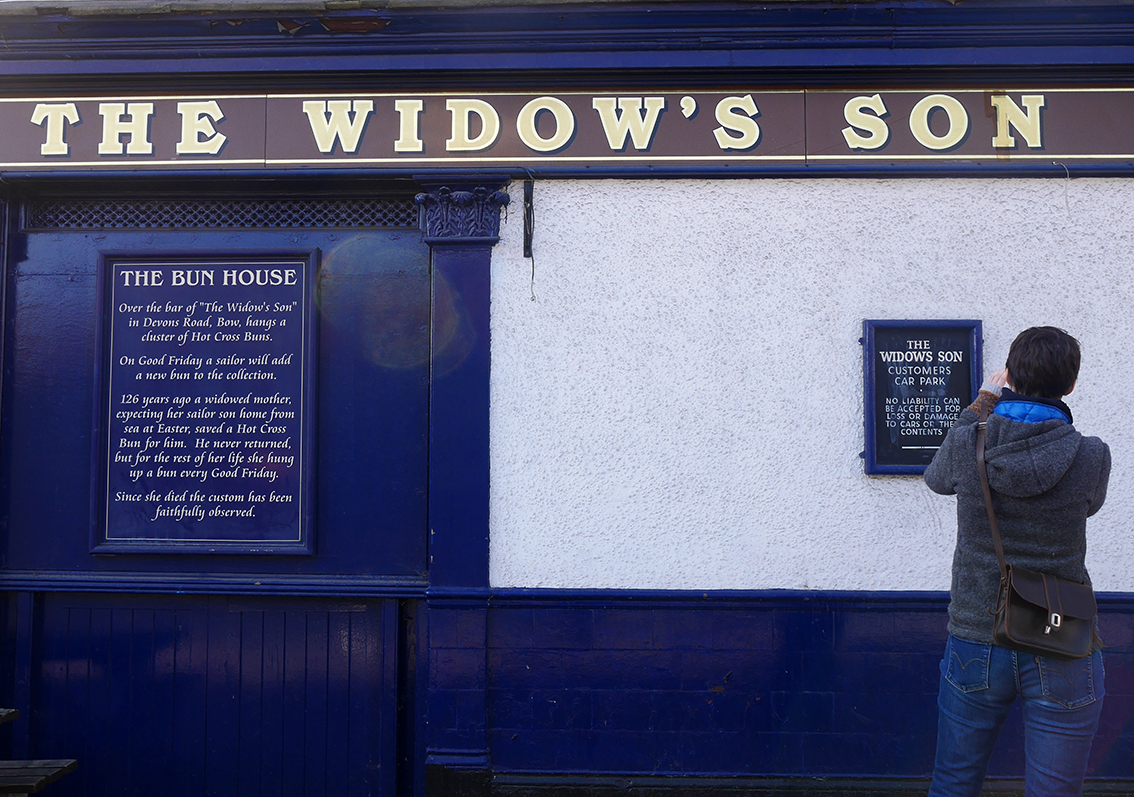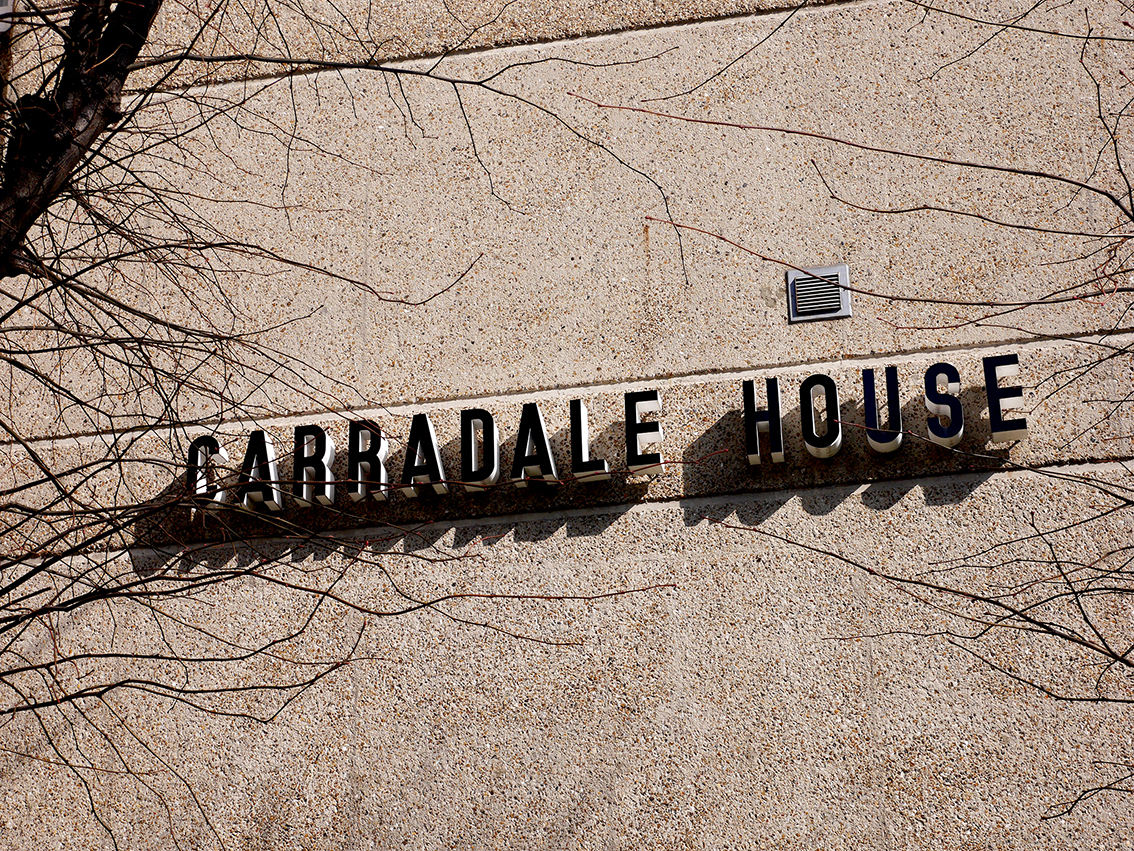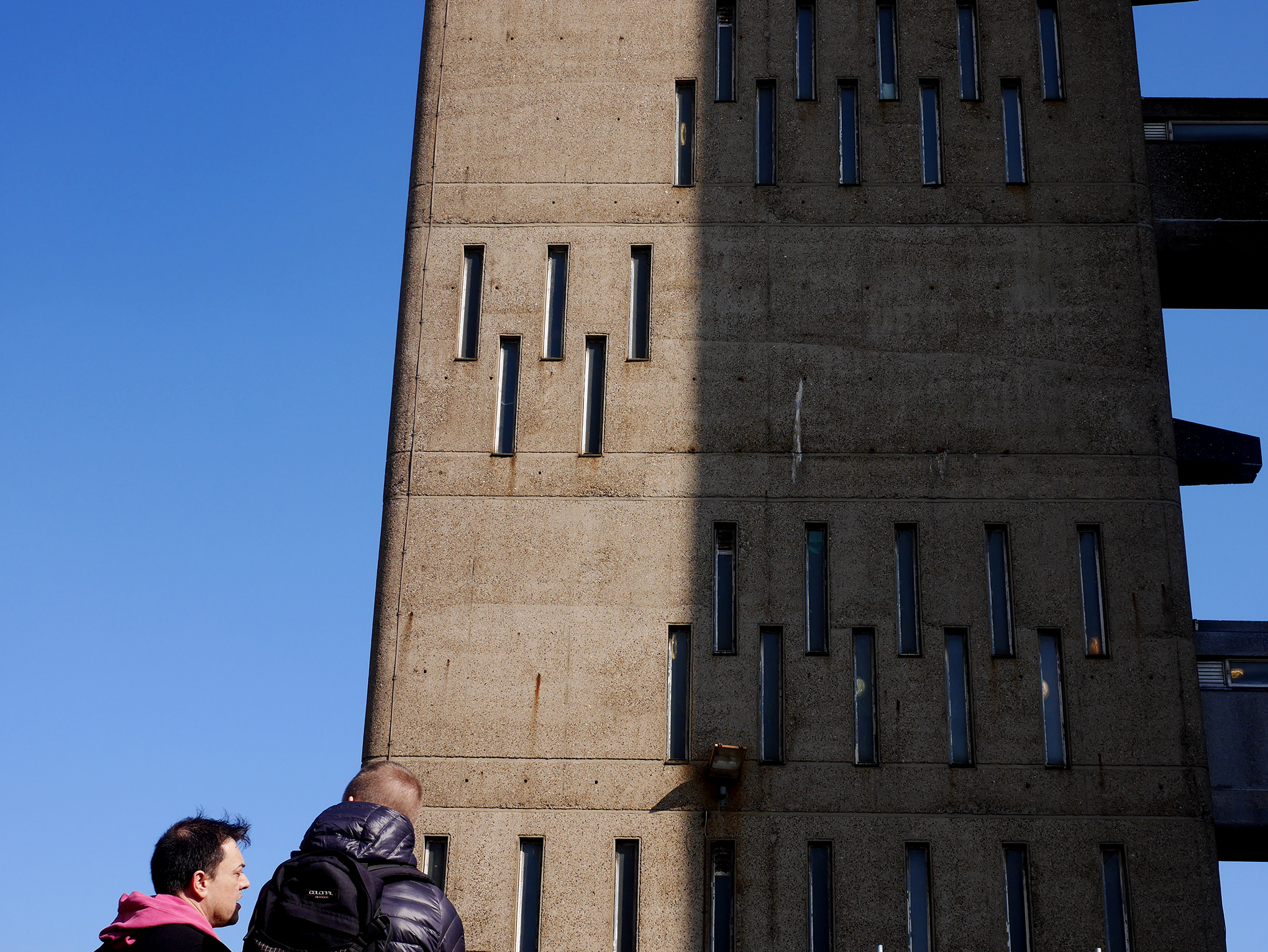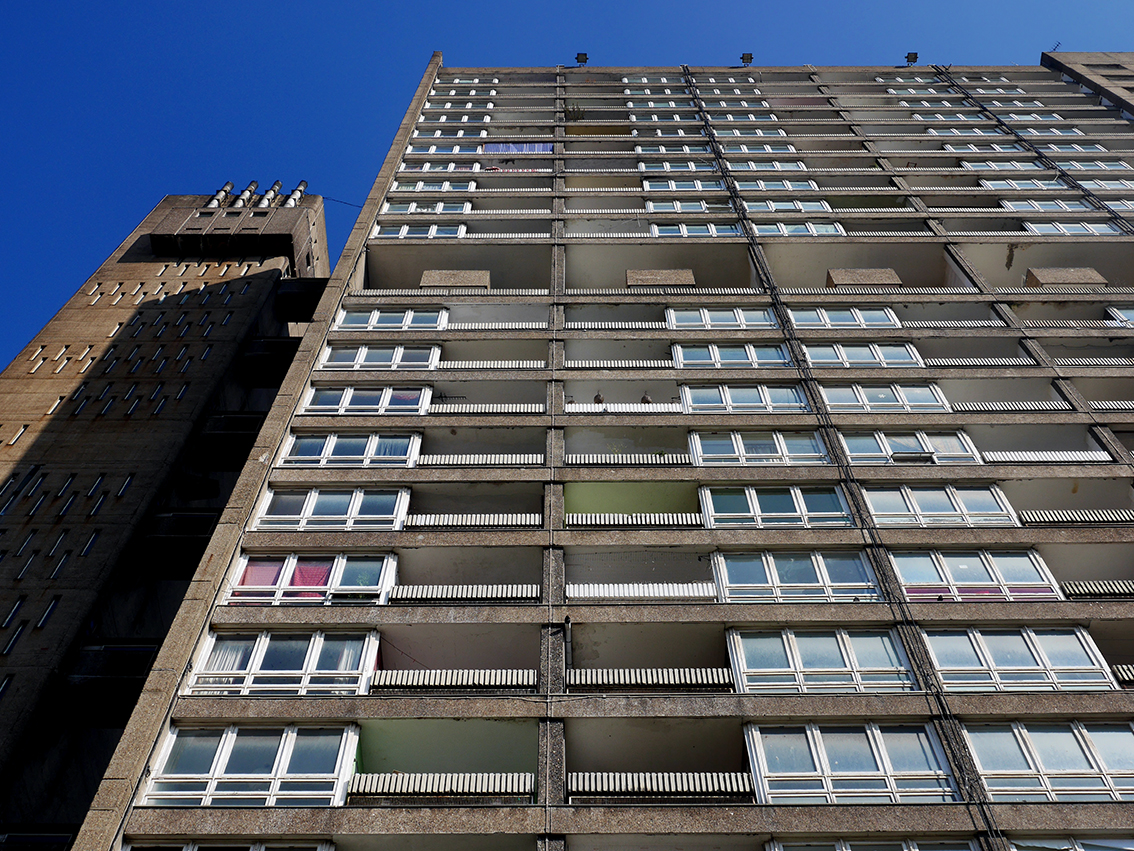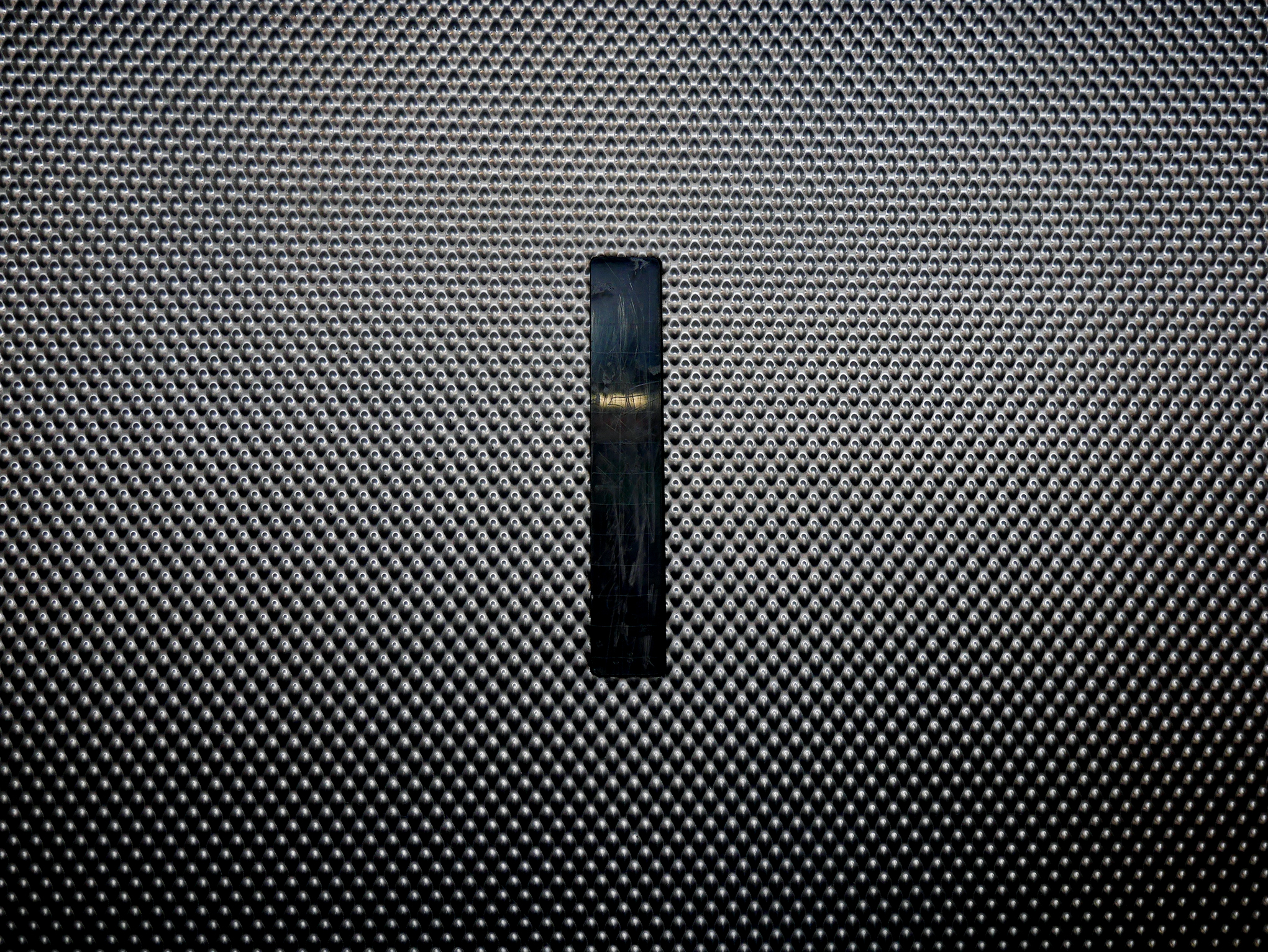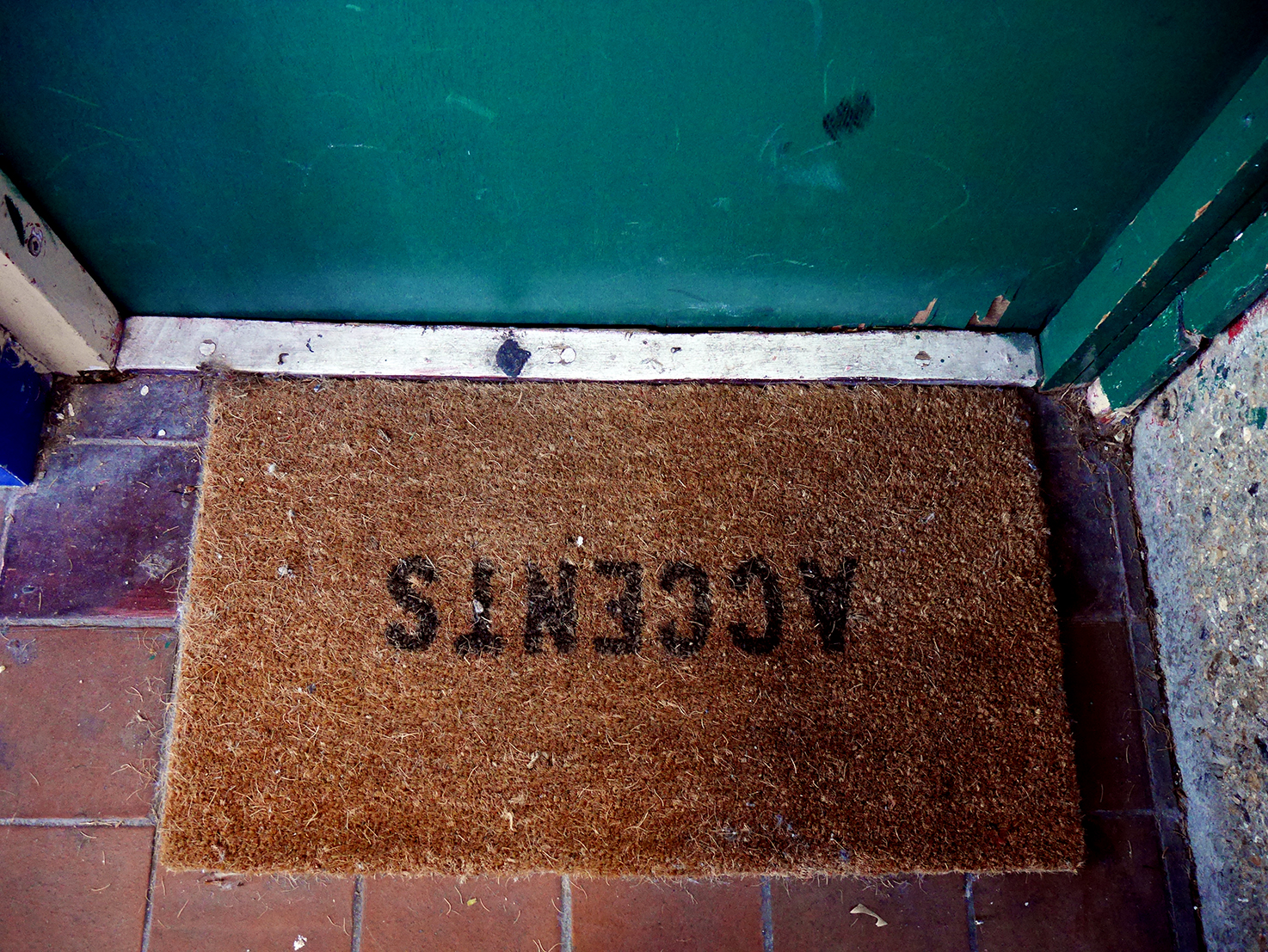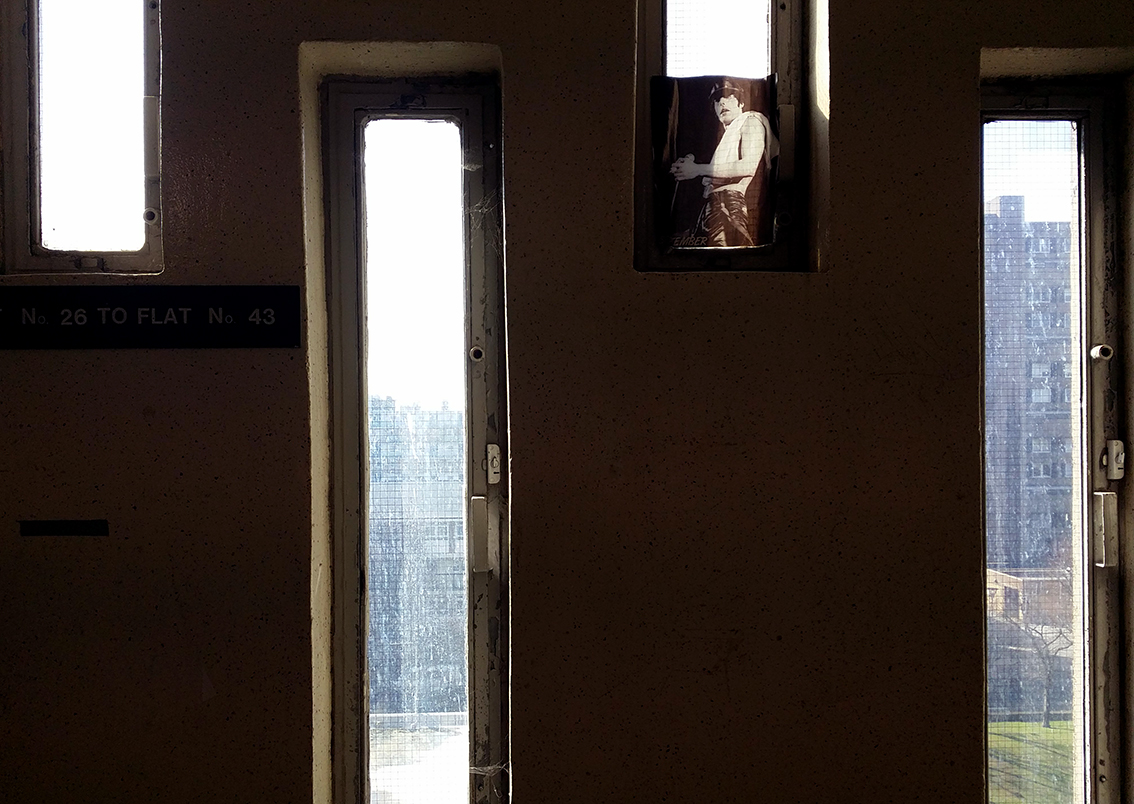“Musing takes place in a kind of meadowlands of the imagination, a part of the imagination that has not yet been plowed, developed, or put to any immediately practical use…time spent there is not work time, yet without that time the mind becomes sterile, dull, domesticated. The fight for free space — for wilderness and public space — must be accompanied by a fight for free time to spend wandering in that space.”
Rebecca Solnit: Wanderlust, a history of walking
We walk and talk through the backstreets of Bow. Today’s Walkative Society consists of a bunch of RCA students, architecture buffs and curious hangers-on. ‘Musings on the notions of private and public space’ is an intellectual title for what’s surely a salt-of-the-earth wander around East End housing estates. But as Rebecca Solnit writes, that free-time spent walking, wandering, wondering unleashes a vital part of our imagination.
There are all the dreary details the cynics might expect: old-man pubs; net curtains; ragged St Georges cross flags and discarded cans of Holsten Pils. But this is London so really all you can expect is surprise: a chain-link fence is crocheted to create flower patterns; a watering hole that holds an unusual history; a March day that is nothing short of balmy. London’s socio-economic history is especially patchwork in Tower Hamlets, and a timeline unfolds in raging sunlight as our walk progresses. A 70’s lo-rise is sewn together with a a converted Victorian printworks; a hopeful ’90’s estate house edges towards a modern development, foundations just out of the ground. London changes. It’s disconnected, almost dislocated. New blocks boast irrelevant street names like Ligurian Walk (which doesn’t seem to exist on google maps when I search again). The obscure stations of Devon’s Road and Langdon Park take us into the nether regions of the DLR.
The sort of scale of development we don’t often see here. “It’s like Spain,” someone says: all clean hard surfaces, patterned façades and new-builds. Turn the corner, and pockets of past are pulled out: The Widows Son, a pub with a melancholy story:
Over the bar of “The Widow’s Son” in Devon’s Road, Bow, hangs a cluster of Hot Cross Buns.
On Good Friday a sailor will add a new bun to the collection. 126 years ago a widowed mother, expecting her sailed son hime from sea at Easter, saved a Hot Cross Bun for him. He never returned, but for the rest of her life she hung upbun every Good Friday. Since she died the custom has been faithfully observed.
Inscription on the pub wall
‘No groups allowed, by appointment only’ reads the sign in the misted up window. A proper boozer.
We near Poplar, and signs of pride emerge. A statue to a boxer done good; local boy to world champion. A fresh-out-the-box secondary school clad in iridescent pink and green; spruced up Harca estates with thoughtfully added fences and terraces to create a little private space for tenants.
Then boom. Here comes Balfron. You can’t miss the Balfron Tower with the kind of ballsy, badass brutalism you’d never see in housing nowadays. Goldfinger, the architect of this Grade 2 Listed tower, was known as a humourless man prone to rages, and perhaps the tower reflects his lack of empathy. The architect was Ian Fleming’s role model for that classic James Bond Villain Auric Goldfinger. For the first two months of the towers inhabitance he lived on the top floor with his wife to troubleshoot, then promptly decamped to his house in Hampstead. Tower blocks became the bad guys, and often for good reason.
“She referred to the high-rise as if it were some kind of huge animate presence, brooding over them and keeping a magisterial eye on the events taking place.” High Rise, JG Ballard
We somehow make it inside and it’s human nature to head to the top. Packed into the slender 12 person lift, the engineers among us run a quick calculation to establish that the average person’s weight in the skinny 60’s was only 75kg. The elevator makes it up on the 24th floor, Nuno buzzes a friend and cajoles him into letting us into the tenants area: One flat empty, one inhabited; one on, one off. The place is on its last legs. The final tenants vacate in April and the block is already covered in surveyor’s stickers, like a plastic surgeon’s marks ready to nip, tuck and restore it to former glory.
For some of us it’s claustrophobic up here, hemmed in between slabs of rough aggregate and safety glass. But Paula is wistful, remembering her Polish upbringing among concrete pre-fabs. There's an escape: with an engineers sleight of hand we unhook the safety catch on the 24th floor window, wince as we stick our heads into the fresh air and gasp at the glorious expanse of patchwork London before us.
Back outside and half the group have paid the £1 entry fee to the Brownfield Community cabin: the busy social-club-cum-estate pub where teenagers play pool and granddads prop up the bar. “A pint's only £2.50,” says the barman all gold chains, belly and Aertex shirt “whereas it’s £3.50 round the corner, so you’ve already saved money, see?” They must think we’re a strange lot walking around the Poplar for a laugh, but the Balfron has been a potent mix of native East End families, property guardians and artists for a while and anything goes in the East End.
On through Chrisp Street, the first purpose-built pedestrian shopping area in the UK. Past Hope Enterprise Bible sellers, the Ideas Factory and Tandoori Nites. Into the infamous Robin Hood Gardens, crumbling, half occupied and now set for demolition. Why was Balfron saved and listed, and this is coming down? The papers say 76% of residents now want to leave, but have the council just left the place to rot to push them out? Is the real reason the proximity to Canary Wharf which will warrant higher land values than hidden-away Balfron? We learn from Nuno how in Sweden, 80% of homes are social housing. The British obsession with status and class can sometimes taint the values that drive social housing, pushing everyone to now unaffordable or out of reach ownership. What comes down isn’t the building, but the intricate social structures that become a part of it.
We all need somewhere to live, a place to call home. This might seem ironic coming from a collective called ‘No Fixed Abode’ but shelter is of course a fundamental right, yet one that we see the world increasingly struggle with: migrants are buffeted around Europe, Balfron’s social tenants are ‘decanted’ and told to their surprise they can’t return; private renters are out-priced and forced to move further away. But we also see tenants homes improved and estates made safer; the demolition of badly maintained buildings making way for new. Our homes are contested in London as we tug between space, money, location, comfort and status. It takes fighting spirit to live here, but now more for economic reasons rather than street smarts.
The Knowledge
To join a walk with the Walkative Society
https://walkative.wordpress.com/
A great resource and archive on the Balfron Tower.
A building archive
http://www.balfrontower.org/
And a balanced bit of background on the full picture at Balfron from the East End Review
To consider a broader point of view on contested social-housing in London, including other Estates such as the Heygate and Carpenter's Road
Urban Pamphleteer
Regeneration Realities
Or better yet, just go for a walk...
Thanks to Nuno Coelho, Paula Smolarska, Tom Spooner, Simon King and all the walkers

